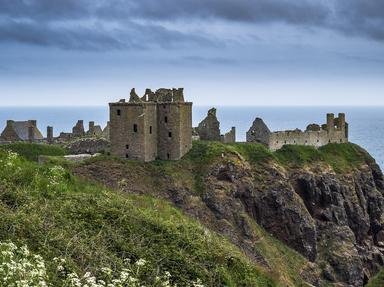Quiz Answer Key and Fun Facts
1. Of which island group is the Isle of Skye a part?
2. The proportion of a category of peak is higher on Skye than it is anywhere else in Scotland. By what name are peaks of over three thousand feet in height known?
3. The 'capital' of Skye is the town of Portree or 'Port an Righ'. This name when translated into English means 'Port of the King'.
4. The highest point on the Isle of Skye lies within the famous mountain range known as the Black Cuillin or 'An Cuiltheann'. Which of the following, sharing its name with an historical leader, is the highest peak on the island?
5. This mountain is the most northerly of those in the range known as the Red Cuillin. Its name in Scots Gaelic is 'Glamaig'. To what does this name translate in English?
6. Its name translates from Old Norse into English as 'Round Fold'. The feature known as the Cuith-Raing, or Quiraing, was created by which catastrophic natural event?
7. Its name means 'Cauldron of the Waters'. Loch Coruisk was the inspiration for which song, popular with traditional musicians in both Scotland and across the globe?
8. Which landmark, located on the Trotternish peninsula, shares part of its name with a natural formation in the Orkney Islands?
9. Like many of the Scottish islands, until the middle of the 13th century, the Isle of Skye came under the influence of which warlike people?
10. Named for the ancient ruling clan of Skye, the three sea stacks located at the southerly end of Skye's most westerly region are known by which name?
Source: Author
SisterSeagull
This quiz was reviewed by FunTrivia editor
agony before going online.
Any errors found in FunTrivia content are routinely corrected through our feedback system.
